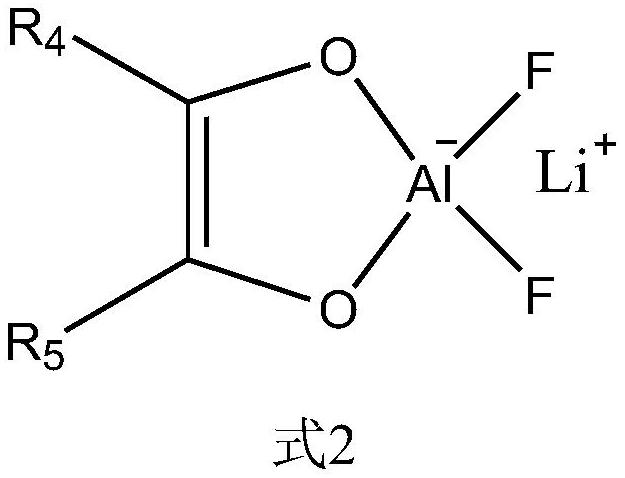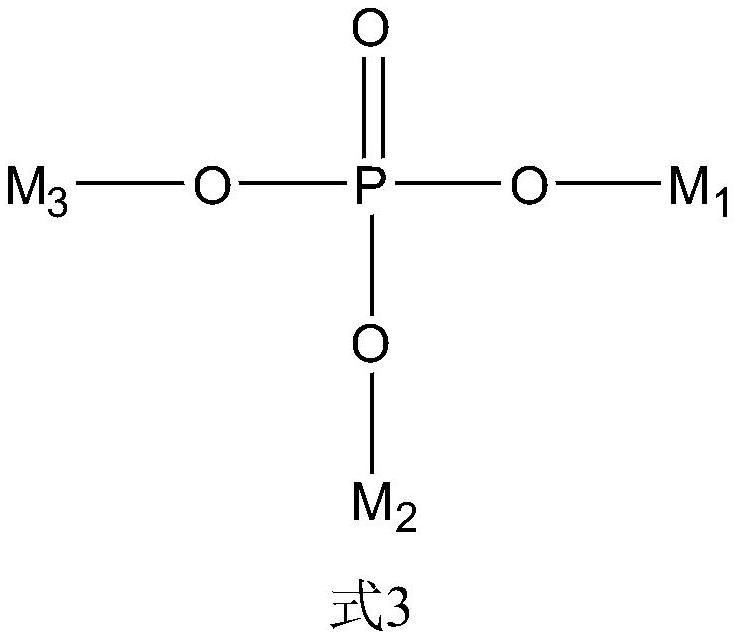Non-aqueous electrolyte for lithium ion battery and lithium ion battery comprising same
A non-aqueous electrolyte and non-aqueous electrolyte technology, applied in secondary batteries, secondary battery repair/maintenance, circuits, etc., can solve the problems of high impedance, high-temperature performance and low-temperature performance, and lack of high-temperature effect of low-impedance additives, etc. problems, to achieve excellent high-temperature storage performance and low film resistance
- Summary
- Abstract
- Description
- Claims
- Application Information
AI Technical Summary
Problems solved by technology
Method used
Image
Examples
Embodiment 1
[0088] Control group 1 of embodiment 1
[0089] (1) Preparation of positive electrode sheet
[0090] The positive electrode active material 4.4V lithium cobalt oxide (LCO), the binder polyvinylidene fluoride (PVDF), and the conductive agent acetylene black are mixed according to the weight ratio of 97:1.5:1.5, and N-methylpyrrolidone (NMP) is added. Stir under the action of a vacuum mixer until the mixed system forms a uniform fluid positive electrode slurry; evenly coat the positive electrode slurry on an aluminum foil with a thickness of 12 μm; bake the above-mentioned coated aluminum foil in an oven with 5 different temperature gradients Afterwards, it was dried in an oven at 120° C. for 8 hours, and then rolled and cut to obtain positive electrode sheets.
[0091] (2) Negative sheet preparation
[0092] Negative electrode active material graphite, thickener carboxymethylcellulose sodium (CMC-Na), binder styrene-butadiene rubber, conductive agent acetylene black are mixed...
Embodiment 2
[0126] Control group 1 of embodiment 2
[0127] (1) Preparation of positive electrode sheet
[0128] Mix the positive electrode active material 4.3V NCM523, the binder polyvinylidene fluoride, and the conductive agent acetylene black according to the weight ratio of 97:1.5:1.5, add N-methylpyrrolidone (NMP), and stir under the action of a vacuum mixer until mixed The system forms a positive electrode slurry with uniform fluidity; the positive electrode slurry is evenly coated on an aluminum foil with a thickness of 10 μm; dried in a vacuum oven for 9 hours, and then rolled and cut to obtain the positive electrode sheet.
[0129] (2) Negative sheet preparation
[0130] Negative electrode active material graphite, thickener carboxymethylcellulose sodium (CMC-Na), binder styrene-butadiene rubber, conductive agent acetylene black are mixed according to the weight ratio 97:1:1:1, add deionized water, Under the action of a vacuum mixer, the negative electrode slurry is obtained; ...
Embodiment 3
[0164] The control group 1 of embodiment 3
[0165] (1) Preparation of positive electrode sheet
[0166] The positive electrode active material 4.4V lithium cobalt oxide (LCO), the binder polyvinylidene fluoride (PVDF), and the conductive agent acetylene black are mixed according to the weight ratio of 97:1.5:1.5, and N-methylpyrrolidone (NMP) is added. Stir under the action of a vacuum mixer until the mixed system forms a uniform fluid positive electrode slurry; evenly coat the positive electrode slurry on an aluminum foil with a thickness of 12 μm; bake the above-mentioned coated aluminum foil in an oven with 5 different temperature gradients Afterwards, it was dried in an oven at 120° C. for 8 hours, and then rolled and cut to obtain the desired positive electrode sheet.
[0167] (2) Negative sheet preparation
[0168] Negative electrode active material graphite, thickener carboxymethylcellulose sodium (CMC-Na), binder styrene-butadiene rubber, conductive agent acetylene ...
PUM
 Login to View More
Login to View More Abstract
Description
Claims
Application Information
 Login to View More
Login to View More - R&D
- Intellectual Property
- Life Sciences
- Materials
- Tech Scout
- Unparalleled Data Quality
- Higher Quality Content
- 60% Fewer Hallucinations
Browse by: Latest US Patents, China's latest patents, Technical Efficacy Thesaurus, Application Domain, Technology Topic, Popular Technical Reports.
© 2025 PatSnap. All rights reserved.Legal|Privacy policy|Modern Slavery Act Transparency Statement|Sitemap|About US| Contact US: help@patsnap.com



